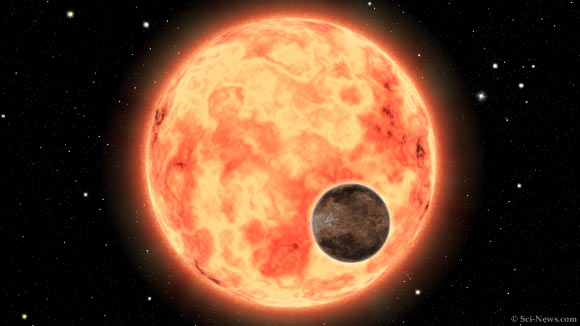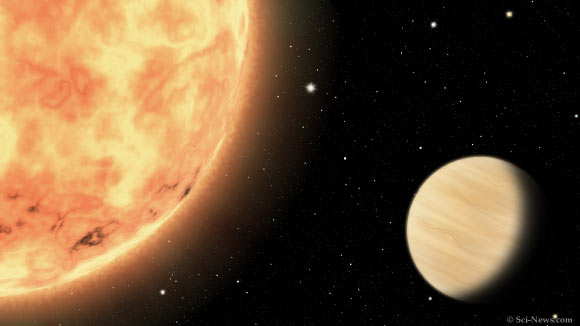Hot Super-Earth and Exo-Neptune Found Orbiting Sun-Like Star | Astronomy – Sci-News.com
Using data from NASA’s Transiting Exoplanet Survey Satellite (TESS) and three ground-based spectrographs, astronomers have discovered an ultra-short-period super Earth and a Neptune-mass planet circling a nearby Sun-like star.
The newfound planets orbit HD 213885 (also known as TOI-141 and TIC 403224672), a 3.8-billion-year-old G-type star located some 156 light-years away.
The inner planet, named HD 213885b (TOI-141b), is 1.74 times larger than Earth and 8.8 times heavier, making it a so-called super Earth.
“HD 213885b has a rocky bulk composition, converting this exoplanet into a bona-fide super-Earth: a rocky planet with a bulk composition similar — although enhanced in iron — to Earth,” said Dr. Nestor Espinoza of NASA’s Space Telescope Science Institute and his colleagues.
HD 213885b has an orbital period of just 1.008 days and a surface temperature of 1,855 degrees Celsius (3,371 degrees Fahrenheit).
This planet is similar to 55 Cancri e, an extremely hot super Earth that orbits a G-type star about 42 light-years from Earth.
“The radius, mass and stellar irradiation of HD 213885b are, given our data, very similar to 55 Cancri e, making this exoplanet a good target to perform comparative exoplanetology of short period, highly irradiated super-Earths,” the astronomers noted.
The outer planet in the system, dubbed HD 213885c (TOI-141c), has a mass of 19.9 times the mass of Earth and is very similar to Solar System’s Neptune.
It orbits the parent star once every 4.78 days and has a surface temperature of 922 degrees Celsius (1,692 degrees Fahrenheit).
“The HD 213885 system is very interesting from the perspective of future atmospheric characterization, being the second brightest star to host an ultra-short-period transiting super-Earth (with the brightest star being, in fact, 55 Cancri),” Dr. Espinoza and co-authors said.
Their paper will be published in the Monthly Notices of the Royal Astronomical Society.
_____
Néstor Espinoza et al. 2019. HD 213885b: A transiting 1-day-period super-Earth with an Earth-like composition around a bright (V=7.9) star unveiled by TESS. MNRAS, in press; arXiv: 1903.07694








